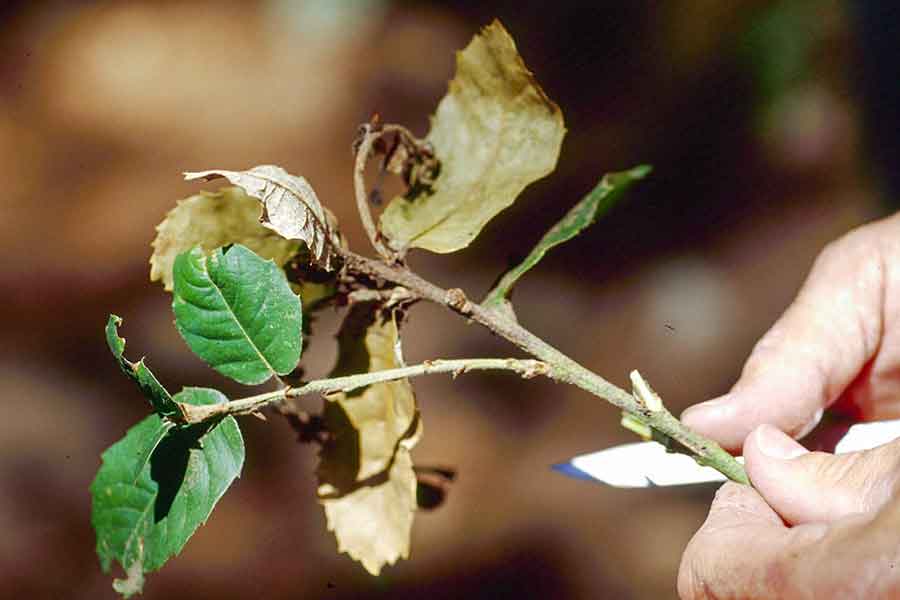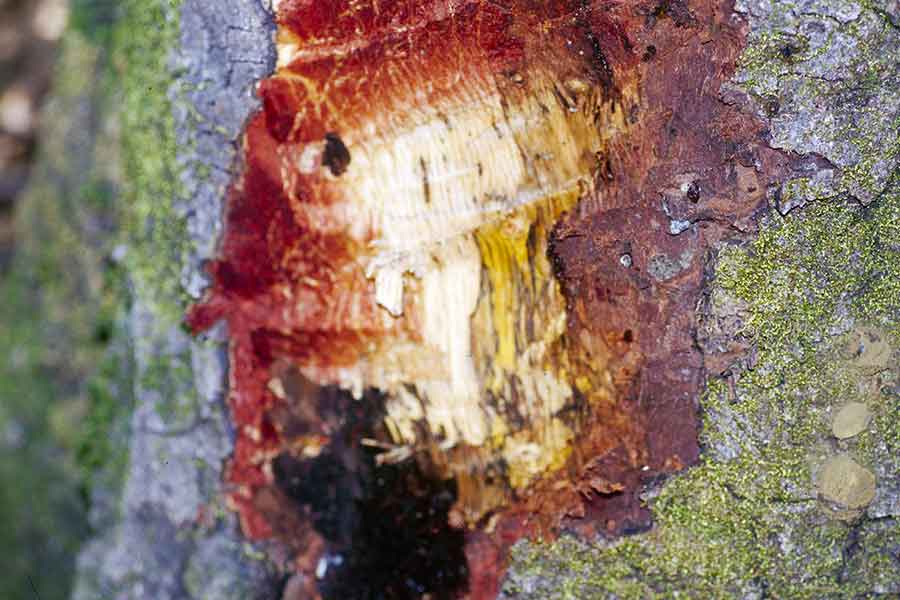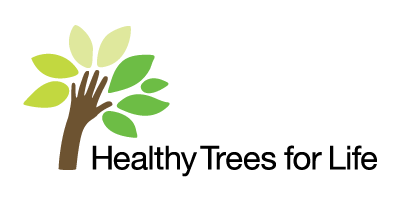Sudden Oak Death
What is it?
Sudden oak death (SOD) is a soil-born fungal disease caused by the pathogen Phytophora ramorum. It has killed millions of tanoaks and coastal live oaks in the coastal areas of northern California and southern Oregon. SOD also infects over 100 other species of plants. Most of these, however, only show minimal damage, presented in leaf spots or minor dieback.
The disease is spread through the movement of infected soil and plant materials. Currently, state and federal regulations control the movement of plants from infected areas. Before the full extent of the problem was known, however, some infected plants were moved to other parts of the country.
Although considered a forest disease, it can affect landscape trees near infected woodland areas. Since symptoms vary on different types of plants and other diseases can look similar, diagnosis is difficult. Confirmation usually requires the help of a trained professional.
What is the threat?
SOD threatens some of the valuable oak woodland in California and Oregon, potentially dramatically changing ecosystems and destroying wildlife habitat. Valuable landscape trees are also threatened.
Where is it?
SOD is most prevalent in coastal northern California and southern Oregon. More precise maps of infected areas are available at suddenoakdeath.org.
What can you do?
If you live in or near infected areas, examine your oaks and susceptible plants often. Look for cankers and oozing bark on oaks and/or leafspot or minor dieback on other plants. For confirmation, contact a properly trained professional such as certified arborist.
Follow these best practices to limit the threat of SOD:
- When landscaping, plant non-host species.
- If you have valuable oaks, do not plant bay trees nearby. They can contribute greatly to the spread of the disease.
- You can take steps to protect valuable trees with a phosphonate fungicide. But keep in mind that it works best as a preventative and is not always effective.
- Contact your local cooperative extension, agricultural commissioner or forestry department if you have questions.
- Wood from infected trees that have been cut down should be left onsite and handled properly.
Other Resources
Suddenoakdeath.org has all the information you’ll need, including lists of susceptible and immune species.
Information provided April 2015, courtesy of the Bayer Advanced Healthy Trees for Life initiative. Bayer®, the Bayer Cross® and Bayer Advanced™ are trademarks of Bayer.




